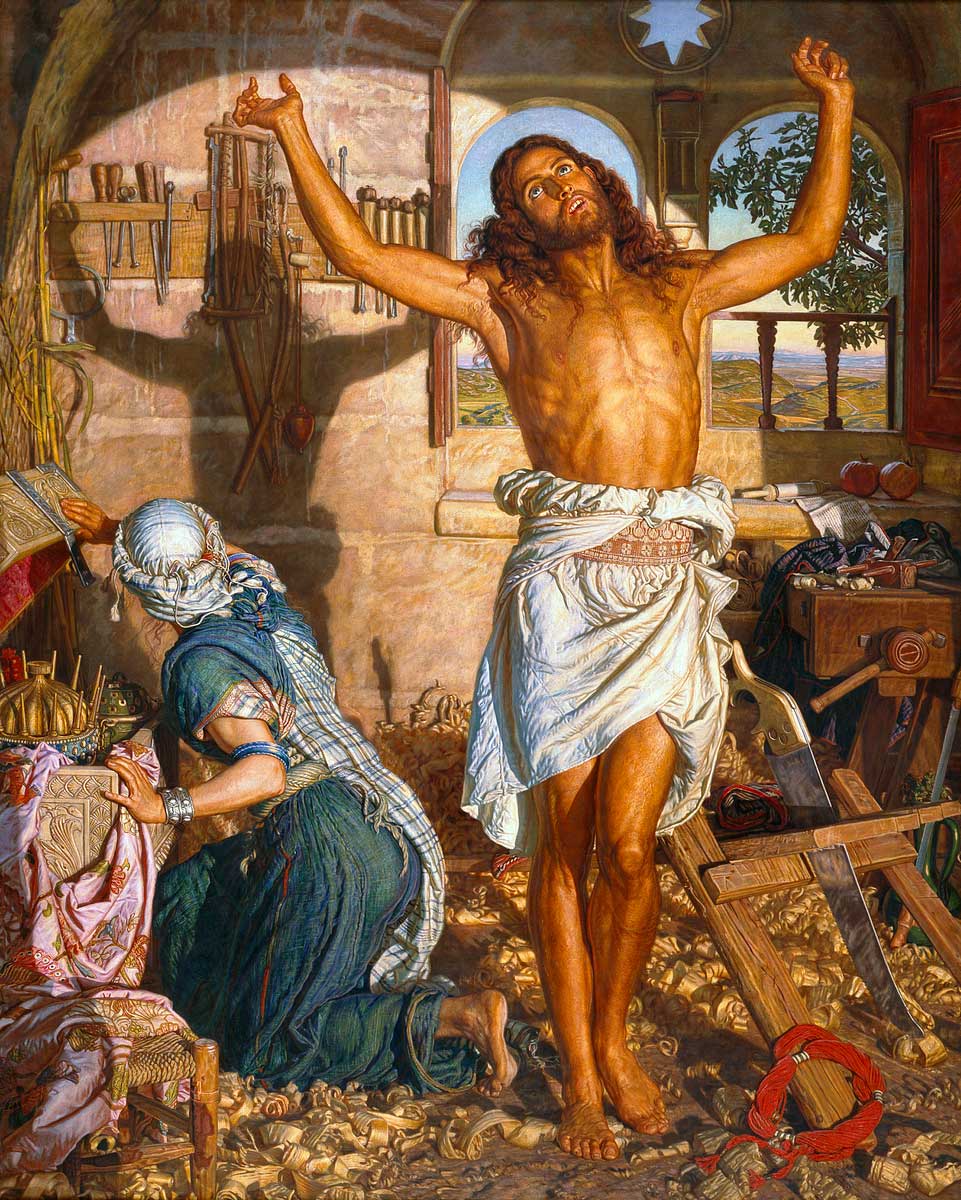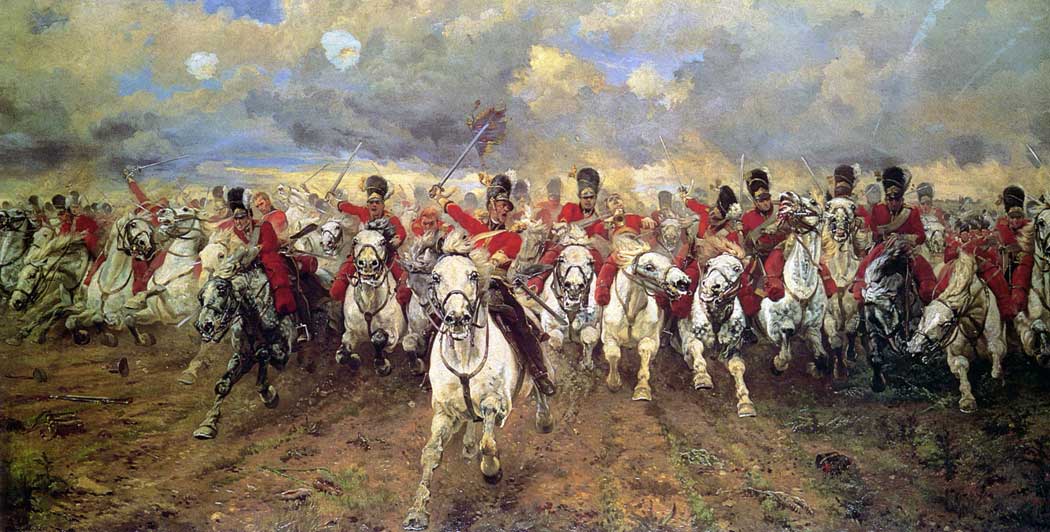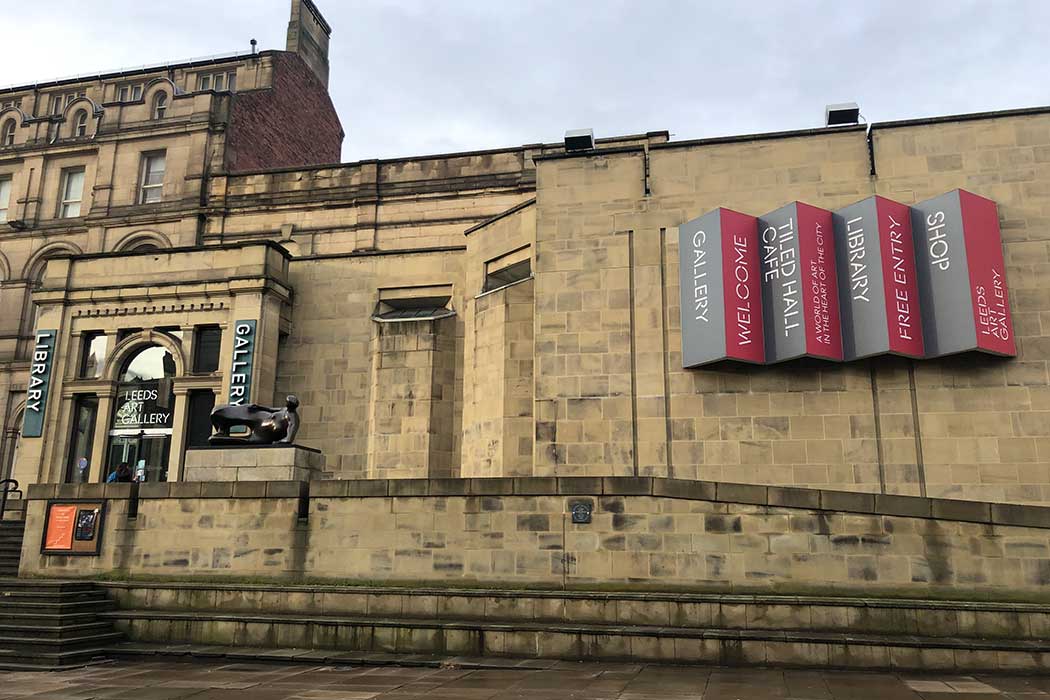Leeds Art Gallery displays a large collection of British artworks from the 19th and 20th centuries.
The art gallery recently closed for a major renovation, reopening in October 2017. This renovation uncovered the Central Court Gallery’s glass roof, which had previously been obscured by a false ceiling.
![The Leeds Art Gallery’s first floor landing and exhibition area. (Photo: Chemical Engineer [CC BY-SA 4.0])](https://englandrover.com/wp-content/uploads/2018/09/leeds-art-gallery-exhibition.jpg)
What to see at the Leeds Art Gallery
The Leeds Art Gallery houses mostly British art from the 19th and 20th centuries.
The gallery’s most important paintings include the Retribution (1858 by Edward Armitage, Shadow of Death (1873) by William Holman Hunt, Scotland Forever! (1881) by Elizabeth Thompson, the Bridesmaid (1883–85) by James Tissot, the Lady of Shalott Looking at Lancelot (circa 1894) by JW Waterhouse, The Valley of Shadows (1899) by Evelyn De Morgan, Praxitella (1921) by Percy Wyndham Lewis, the Tin Mine (1954) by Graham Sutherland, Postcard Flag (Union Jack) (1981) by Tony Cragg and The Artist in her Studio (1993) by Paula Rego.


Highlights of the gallery’s sculpture collection include a cast of The Age of Bronze (1877, cast in 1906) by Auguste Rodin, Reclining Woman: Elbow (1981) by Henry Moore, Hieroglyph (1953) by Barbara Hepworth, Mother and Child (1936) by Henry Moore, a maquette of Anthony Gormley’s Leeds Brick Man as well as a 1712 marble statue of Queen Anne, Leeds oldest civic sculpture, in the gallery’s entrance hall.
Temporary exhibitions at the Leeds Art Gallery
In addition to its permanent collection, Leeds Art Gallery also hosts a programme of temporary exhibitions. Current and planned exhibitions include:
Helen Chadwick: Artist, Researcher, Archivist
This exhibition (until 25 January 2026) examines the working methods of British artist Helen Chadwick (1953–96), whose practice spanned sculpture, photography and installation. Drawing from science, art history and philosophy, her work often explored identity, gender and the body. Chadwick’s archive includes notebooks, sketches and research material used in key projects such as Ego Geometria Sum and Viral Landscapes. The exhibition highlights how research and self-archiving shaped her artistic process throughout her career.
Mike Nelson: M62 (East, West)
Mike Nelson: M62 (East, West) (until 1 February 2026) features a new commission by British artist Mike Nelson. The work continues a series using blown-out tyres collected from major roads, begun in 2013. For Leeds Art Gallery, Nelson focuses on the M62, producing paired sculptures that invite close comparison and encourage attention to everyday industrial materials and their histories.
Portrayals of Women
This display from Leeds Art Gallery’s works on paper collection (until 5 April 2026) explores depictions of women from the 17th century to today. It features older works by artists such as Rembrandt alongside recent acquisitions by Skye Davies and Sumuyya Khader. The selection reflects a broad range of perspectives and approaches, drawn from a collection of over 10,000 items spanning more than five centuries.
An Axis of Abstraction: Art in Cornwall and Yorkshire – Then and Now
This exhibition (until 7 June 2026) explores the links between artistic communities in West Cornwall and West Yorkshire from the 20th century to today. It includes works by Barbara Hepworth, Ben Nicholson and others connected with St Ives, alongside recent acquisitions by Veronica Ryan, Ro Robertson and Emii Alrai. The display highlights shared influences, residency programmes and the continuing dialogue between artists working in these two regions over several generations.
‘Don’t Let’s Ask for the Moon…’: Nocturnes and Atkinson Grimshaw
This exhibition (14 November 2025–19 April 2026) presents Leeds Art Gallery’s collection of nocturnal works by John Atkinson Grimshaw, including Reflections on the Aire – on strike (1879). The exhibition reassesses Grimshaw as a painter of modernity rather than nostalgia, and includes contemporary responses by artists working with night-time themes in painting, photography and neon.
Pyramid View On… John Atkinson Grimshaw
This exhibition (14 November 2025–19 April 2026) presents new work by Pyramid member artists responding to the nocturnal scenes of Leeds-born painter John Atkinson Grimshaw. The exhibition focuses on the transition from dusk to night, a recurring theme in Grimshaw’s painting. Workshops accompany the display, encouraging visitors to create their own responses. The project runs alongside a major Grimshaw exhibition.
Plant Dreaming
Plant Dreaming (14 November 2025–19 April 2026) brings together contemporary artists exploring plant knowledge through narrative and imagination rather than science. Textiles, ceramics, drawings, film and photography consider themes such as ecology, folklore and identity. Works reflect ideas of migration, medicinal traditions and the relationship between humans and the natural world.
Visiting the Leeds Art Gallery
The Grade II-listed building has a prominent position on the Headrow, right next to the Henry Moore Institute and just a three-minute walk from Leeds City Museum. Most other points of interest in the city centre are just a short walk away, including the Corn Exchange, Leeds Kirkgate Market and the Victoria Quarter, which are around a 10-minute walk away.
It is a 10-minute walk from the railway station and a 15-minute walk from the bus station.

Leeds Art Gallery is open Tuesday to Saturday and admission is free of charge. It is fully wheelchair accessible.
The art gallery has a gift shop and an excellent cafe. Although it can get busy, the Tiled Hall Café is a delightful spot for a hot drink and a light meal. It was originally the main reading room of Leeds Central Library and was extensively renovated in 2007 making it one of Leeds most iconic cafes.
![The Tiled Hall Cafe was originally Leeds Central Library’s main reading room and after an extensive renovation project in 2007, it is now one of Leeds’ most iconic eateries. (Photo: Chemical Engineer [CC BY-SA 4.0])](https://englandrover.com/wp-content/uploads/2018/09/tiled-hall-cafe.jpg)


There are no comments yet.